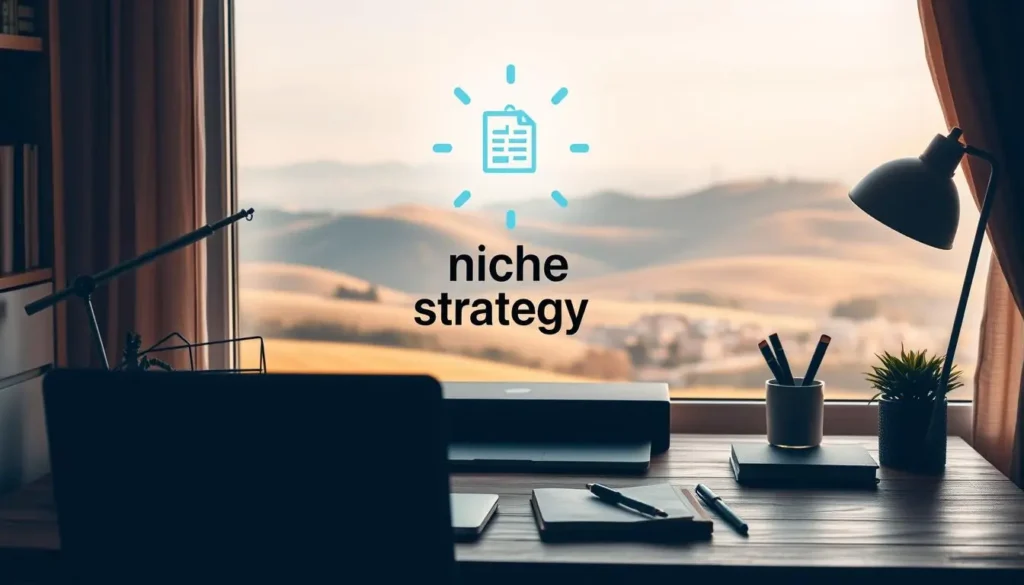Influencers Gone Wild: 4 Money Moves That Make a Career
Influencers gone wild isn’t chaos, it’s a chance to start a business. In today’s creator economy, the winners turn spikes into systems. This guide will help you start strong in the United States, whether you’re a creator in California, Texas, or New York.
It covers how to make money from virality and build a lasting social commerce strategy. It also talks about when to hire a CPA for content creators to make money stable.

Grayson Finks is a great example. After her health clips lost steam, she focused on connecting with her audience and TikTok Shop. She posted 10+ shoppable outfit videos daily, serving 175,000+ followers.
At 20, she made over $350,000 a year by treating her content like a job. She had set hours, repeatable formats, and clear calls to buy.
Her strategy is simple and tough: invest your own money in early hauls; mine comments for praise and problems; reuse what works; plan seasons two months ahead; watch account status; and appeal moderation errors. Organic brand mentions led to deals with PacSun, Edikted, and Princess Polly. Small creator collabs kept momentum high and costs low.
Daisy Anne Mitchell shared her budgeting tips in a Money Diaries profile. She budgets, builds an emergency fund, and tracks spend before scaling. A CPA for content creators can help with taxes, compliance, and cash flow during growth.
For financial guidance, see our influencers accounting services designed to help creators manage money and scale with confidence.
This series turns noise into a roadmap. You’ll learn four money moves for a career: data-led focus, disciplined content systems, smart brand-building investments, and professional finance ops. If you want influencersgonewild to mean revenue, not randomness, start here.
Build your creator business foundation: niche, personality, and consistency
Careers grow when focus meets proof. A clear niche strategy, a steady tone, and consistent posting are key. Read audience signals, keep content formats ready, and protect your brand from the start.

Find Your Niche With Proof, Not Guesses
Start with a clear direction, then refine it based on results. Track which products and content formats work best on TikTok Shop and Instagram Reels. Topics that get more views and comments show they’re a good fit.
Creators like Grayson Finks show the power of pivoting. He moved from health to fashion when sales were low, then focused on outfit videos when sales improved. This approach is based on data, not guesses.
Shape a Personality That Sells
Choose a persona you can keep up with, even on busy days. Whether calm, bold, or mindful, consistency is key. It builds trust and makes buying again easier.
Grayson mixes style with sobriety, creating a unique voice. This consistency helps viewers know what to expect from him.
Post with discipline
Going viral takes more than drafts. Post often and light. TikTok’s algorithms favor creators who keep going.
Plan your work with start and stop times. Record, edit, and schedule posts. This keeps your energy up and prevents burnout.
Translate momentum into revenue habits: daily output, audience signals, and product-market fit
Turn your success into daily routines. Log your output, listen to audience feedback, and focus on what works. Praise and problems guide you to what people want.
Start simple with your finances. Track costs for filming, wardrobe, and tools. Basic bookkeeping helps prove your worth to partners.
influencers gone wild: 4 money moves that turn virality into a career
Viral moments don’t last long. To make money from them, follow a simple plan. Invest early, reuse what works, plan for seasons, and keep costs low. View every post as a chance to get brand deals and manage your money well.

Every business, even in the creator world, runs on the 4 M’s. Influencers are usually strong in some, but miss the last one:
- Money – This is where most “influencersgonewild” lose. Without budgeting, tax planning, and professional systems, income turns into chaos fast. This is why accounting for content creators, accountants for influencers, or a CPA for content creators isn’t optional it’s survival.
- Marketing – This is your natural talent. You already know how to capture attention, grow followers, and keep fans engaged.
- Merchandise – Like it or not, you are the product. Your style, voice, and content are what people buy into. For some creators, merchandise also means real products or affiliate shops.
- Management – Some creators thrive at organizing collabs, managing editors, or negotiating brand deals. Others need help here.
Keep some money aside for unexpected costs. This keeps your income stable as you grow.
| Move | Practical Action | Metric to Track | Revenue Impact | Tools/Pros |
|---|---|---|---|---|
| Invest First | Self-fund hauls to prove demand | Units sold per post | Increases inbound brand offers | Affiliate dashboards, storefront analytics |
| Reuse Winners | Recut top formats with new hooks | Save-to-view ratio | Extends content lifespan | Editing templates, A/B captions |
| Plan Seasons | Calendar drops around shopping cycles | CTR during peak weeks | Improves conversion windows | Content calendar, inventory checks |
| Protect Accounts | Weekly health checks and fast appeals | Days active without strikes | Prevents lost campaigns | Platform policy centers |
| Network Smart | Organic brand mentions and collabs | Inbound inquiries per week | Raises rates and volume | Media kit, case studies |
| Money Discipline | Separate accounts and monthly caps | Operating margin | Stabilizes creator cash flow | Accounting for content creators software |
| Tax Ready | Quarterly estimates and 1099 reviews | Tax reserve coverage | Avoids penalties and stress | Online tax accountants, CPA for content creators |
| Deal Strategy | Bundle posts, usage, and listing | Effective CPM vs. usage | Maximizes brand deals strategy value | Rate card, negotiation scripts |
Conclusion
The truth is simple: influencers gone wild isn’t about losing control it’s about building a system. Post daily, reuse what works, plan for seasons, and keep immaculate books.
FAQ
What does influencers gone wild mean in this guide?
It means big moments and sudden fame. We help creators turn these moments into lasting success. We focus on finding your niche, creating a content plan, and managing your finances wisely.
How do I pick a niche if my original plan isn’t selling?
Look at your data. See which videos and products do well. Then, focus on what your audience likes most. Keep trying different things until you find what works.
How can I build a consistent on-camera personality without feeling fake?
Be true to yourself but consistent. Stick to your tone and values. This builds trust with your audience, which leads to more sales and clicks.
Why does posting discipline matter more than high production?
Posting often helps you learn and reach more people. Even simple videos can do well on TikTok and Reels. Set a schedule to keep going without getting tired.
How do I turn momentum into revenue habits?
Create a daily routine and listen to your audience. Make quick follow-ups and reuse successful formats. Track your products and improve them to fit the market better.
Should I invest my own money in products before sponsorships?
Yes, if you can afford it. Funding your own projects can attract brands faster than waiting for freebies. Make sure you have a clear plan for your money.
What’s the best way to capitalize on viral comments?
Use comments to create more content. Answer questions and fix problems. Reuse successful videos to keep the momentum going.
How far ahead should I plan content around seasons and holidays?
Plan at least two months in advance. Get ready for summer, back-to-school, and holidays. This way, you can meet demand when it’s high.
What if AI moderation wrongly flags my account or content?
Check your account daily and appeal quickly. Provide context and keep records of your work. This helps get your account back faster.
How do organic brand mentions turn into paid deals?
Show your sales impact through affiliate dashboards. Brands like PacSun look for creators who can prove they sell products.
Do I need collaborators to grow?
A small group can help. Share ideas, promote each other, and test new things together. This keeps your content fresh and exciting.
What does accounting for content creators actually include?
Start with a budget for platforms, keep personal and business money separate, and track your income. Log all your expenses, from gear to travel.
When should I hire an accountant for influencers or a CPA for content creators?
Get professional help when you earn steady income or manage different sources of money. A CPA can help with taxes and contracts. Online tax accountants offer remote support and quick answers on deductions and state rules.
How do online tax accountants help with creator taxes?
They handle quarterly taxes, review 1099s, and help with sales tax on merchandise. They also help with multi-state taxes and tracking deductions.
What expenses are deductible for U.S. based creators?
You can deduct camera gear, editing software, studio rent, and more. Even a part of your home office might be deductible if you meet certain criteria.
How should I manage variable income like Daisy Anne Mitchell’s?
Save money, cap unnecessary spending, and track costs. Pay yourself a fixed amount each month and save for taxes before spending on your brand.
How often should I categorize expenses and reconcile payouts?
Do it monthly. Match your income to bank deposits, tag expenses, and review your margins. This helps you avoid surprises and make better content choices.
What signals show I’m ready to scale brand deals?
Show consistent posting, sales proof, and clean financial records. This makes it easier for brands to work with you and justifies higher rates.
How do I keep my FYP presence steady without burning out?
Batch record, reuse successful templates, and post at set times. Keep editing simple and protect your downtime. This helps you keep going without getting exhausted.
What’s the simplest weekly workflow to stay on track?
Plan hooks on Monday, film midweek, edit and schedule two days ahead, and review analytics on Sunday. Use comments to script follow-ups and keep the momentum going.
How do I measure whether a niche pivot is working?
Track click-through rate, add-to-cart, conversion, and revenue for four to six weeks. If these numbers improve, your pivot is working.
What disclosures do I need for affiliate and paid posts?
Use clear labels like “Ad,” “Paid partnership,” or “Commissionable links.” Place disclosures early in captions or on screen to follow FTC guidelines and platform rules.
What’s a practical first step today?
Review your last 20 posts, list top formats by revenue, script follow-ups, and set up basic bookkeeping. Consistency and clear numbers can win you deals.

